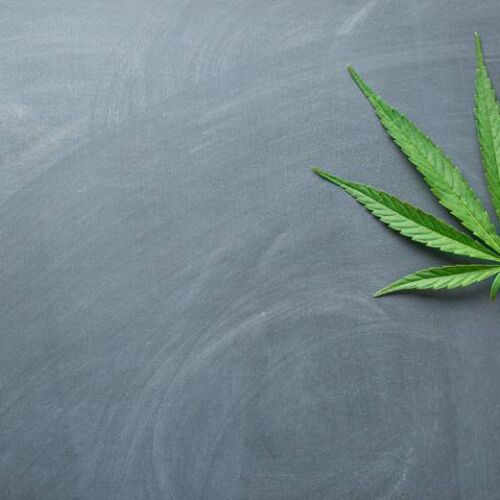Characterized by feelings of uncontrollable nervousness, irritability and tension in dealing with a given set of circumstances. Anxiety disorders cover a wide spectrum of social and emotional ranges and vary greatly from person to person.
There are several types of anxiety disorders including panic disorder, social anxiety disorder, specific phobias, and generalized anxiety disorder.
Anxiety is a normal human emotion that everyone experiences at times. Many people feel anxious, or nervous, when faced with a problem at work, before taking a test, or making an important decision. Anxiety disorders, however, are different. They can cause such distress that it interferes with a person’s ability to lead a normal life.
An anxiety disorder is a serious mental illness. For people with anxiety disorders, worry and fear are constant and overwhelming, and can be crippling.
The Past
Anxiety disorders have historically been treated with a combination of psychological and pharmaceutical treatments. Common benzodiazepines such as Xanax, Valium and Ativan are typical short-term treatments, while antidepressants including Paxil, Zoloft, Prozac and Cymbalta are often used for longer term periods of time.
Anti-anxiety drugs like benzodiazepines work by reducing brain activity. While this temporarily relieves anxiety, it can also lead to unwanted side effects.
The higher the dose, the more pronounced these side effects typically become. However, some people feel sleepy, foggy, and uncoordinated even on low doses of benzodiazepines, which can cause problems with work, school, or everyday activities such as driving. Some even feel a medication hangover the next day.
All antidepressants are required by the FDA to carry a warning about the risk of suicidal thoughts, hostility, and agitation. There is also the risk that antidepressants will cause an increase, rather than a decrease, in depression and anxiety.
Because benzodiazepines are metabolized slowly, the medication can build up in the body when used over longer periods of time. The result is oversedation.
Benzodiazepines are also associated with depression. Long-term benzodiazepine users are often depressed, and higher doses are believed to increase the risk of both depressive symptoms and suicidal thoughts and feelings. Furthermore, benzodiazepines can cause emotional blunting or numbness. The medication relieves the anxiety, but it also blocks feelings of pleasure or pain.
The Plant
CBD-rich strains of cannabis are the most commonly recommended for anxiety. Low-THC cannabis has also been known to be effective, but high-THC strains can be known to exacerbate feelings of anxiety.
Difference between CBD and THC in Medical Marijuana
THC, or tetrahydrocannabinol, is the chemical responsible for most of marijuana’s psychological effects. It acts much like the cannabinoid chemicals made naturally by the body, according to the National Institute on Drug Abuse (NIDA).
Cannabinoid receptors are concentrated in certain areas of the brain associated with thinking, memory, pleasure, coordination and time perception. THC attaches to these receptors and activates them and affects a person’s memory, pleasure, movements, thinking, concentration, coordination, and sensory and time perception, according to NIDA.
THC is one of many compounds found in the resin secreted by glands of the marijuana plant. More of these glands are found around the reproductive organs of the plant than on any other area of the plant. Other compounds unique to marijuana, called cannabinoids, are present in this resin. One cannabinoid, CBD is nonpsychoactive, according to the National Center for Biotechnology Information, and actually blocks the high associated with THC.
Cannabidiol or CBD, is the cannabis compound that has significant medical benefits, but does not make people feel “stoned” and can actually counteract the psychoactivity of THC. CBD does not cause a high, unlike THC. The reason why CBD is non-psychoactive is due to its lack of affinity for CB1 receptors. CB1 receptors are found in high concentrations in the brain, and are the pathways responsible for the psychoactive effects of THC.
CBD and THC levels tend to vary between different strains and varieties of cannabis. By using selective breeding techniques, we have managed to create varieties with high levels of CBD and THC.
The Process
Clinical trials are needed to isolate the most effective methodology for treating anxiety disorders with cannabis.
However, an international group led by Vanderbilt University researchers has found cannabinoid receptors, through which marijuana exerts its effects, in a key emotional hub in the brain involved in regulating anxiety and the flight-or-fight response.
This is the first time cannabinoid receptors have been identified in the central nucleus of the amygdala in a mouse model.
The discovery may help explain why marijuana users say they take the drug mainly to reduce anxiety, said Sachin Patel, M.D., Ph.D., the paper’s senior author and professor of Psychiatry and of Molecular Physiology and Biophysics.
Led by first author Teniel Ramikie, a graduate student in Patel’s lab, the researchers also showed for the first time how nerve cells in this part of the brain make and release their own natural “endocannabinoids.”
The study “could be highly important for understanding how cannabis exerts its behavioral effects,” Patel said. As the legalization of marijuana spreads across the country, more people — and especially young people whose brains are still developing — are being exposed to the drug.
Previous studies at Vanderbilt and elsewhere, Patel said, have suggested the following:
- The natural endocannabinoid system regulates anxiety and the response to stress by dampening excitatory signals that involve the neurotransmitter glutamate.
- Chronic stress or acute, severe emotional trauma can cause a reduction in both the production of endocannabinoids and the responsiveness of the receptors. Without their “buffering” effect, anxiety goes up.
In the current study, the researchers used high-affinity antibodies to “label” the cannabinoid receptors so they could be seen using various microscopy techniques, including electron microscopy, which allowed very detailed visualization at individual synapses, or gaps between nerve cells.
We know where the receptors are, we know their function, we know how these neurons make their own cannabinoids. Now can we see how that system is affected by … stress and chronic (marijuana) use? It might fundamentally change our understanding of cellular communication in the amygdala. – Sachin Patel MD, PhD
The Patient
There is a delicate interaction with cannabis and anxiety, as traditionally speaking, cannabis has been known to have psychological effects that can induce paranoia, anxiety, etc. This makes careful selection of cannabis strains essential in effectively treating symptoms.
In a 2011 study released in the Journal of Pharmacology utilized neuro-imaging to track cerebral blood flow in sufferers of generalized social anxiety disorder. Researchers concluded, “Relative to placebo, CBD was associated with significantly decreased subjective anxiety. These results suggest that CBD reduces anxiety in Social Anxiety Disorder and that this is related to its effects on activity in limbic and paralimbic brain areas.”


